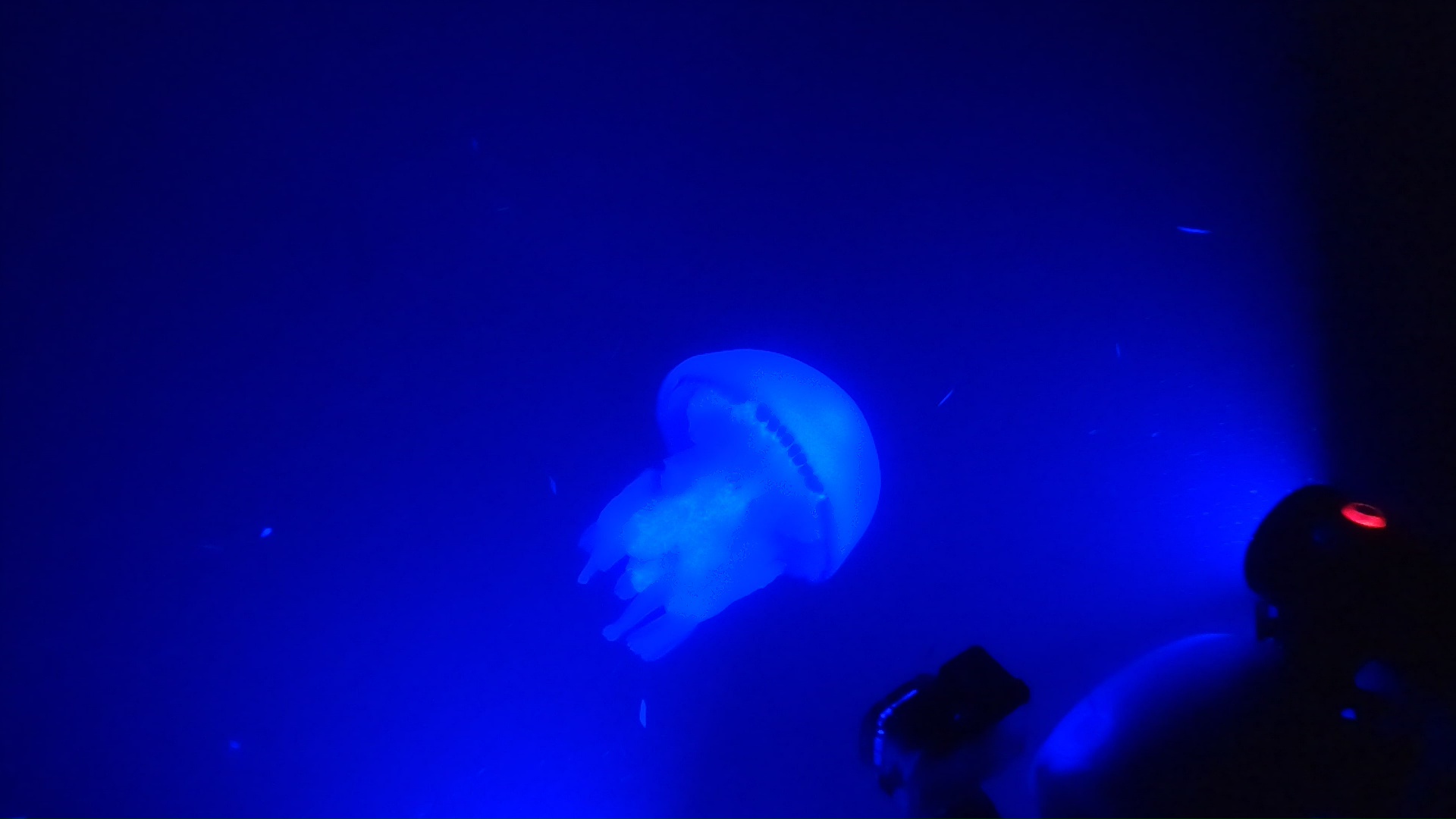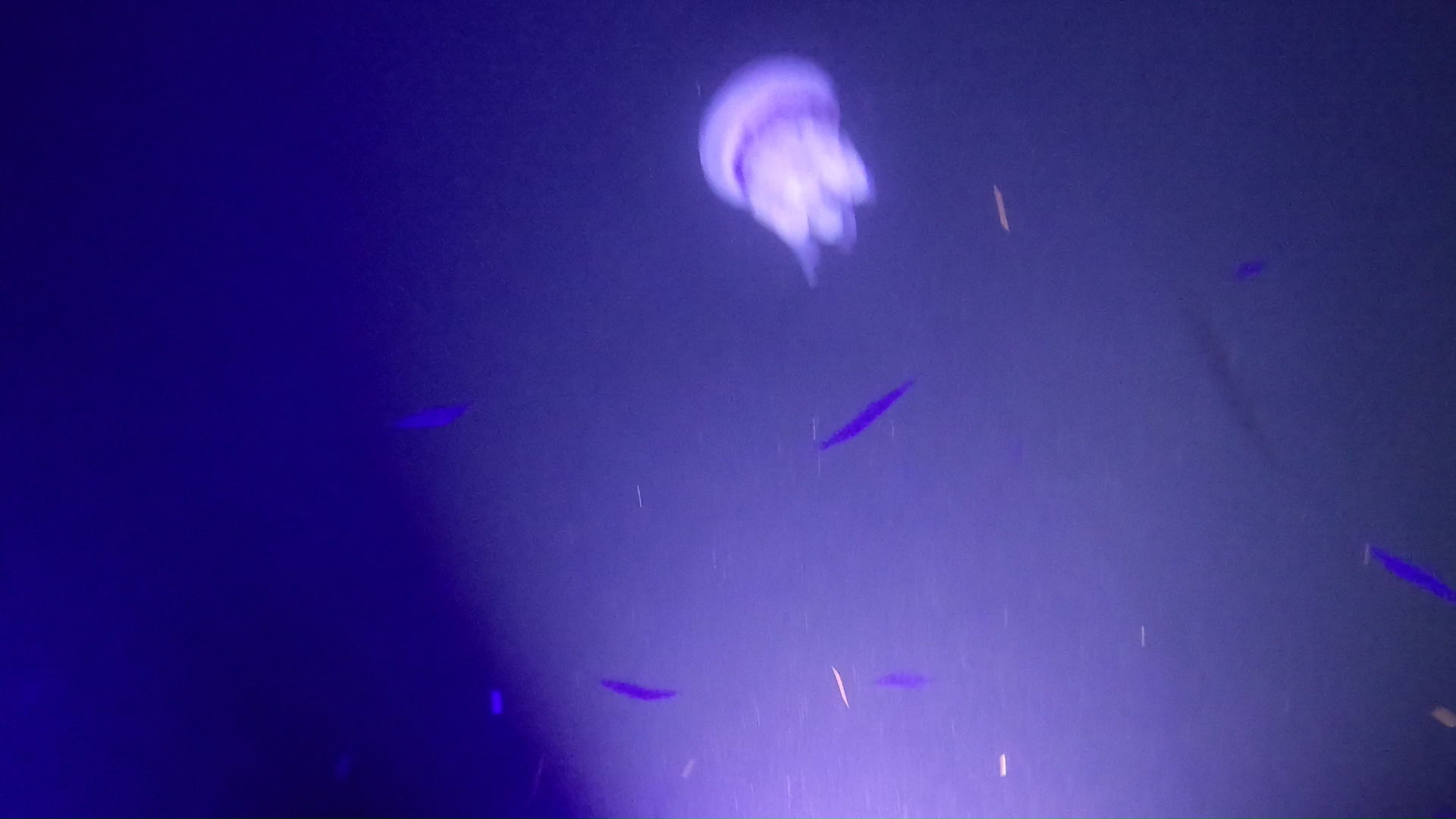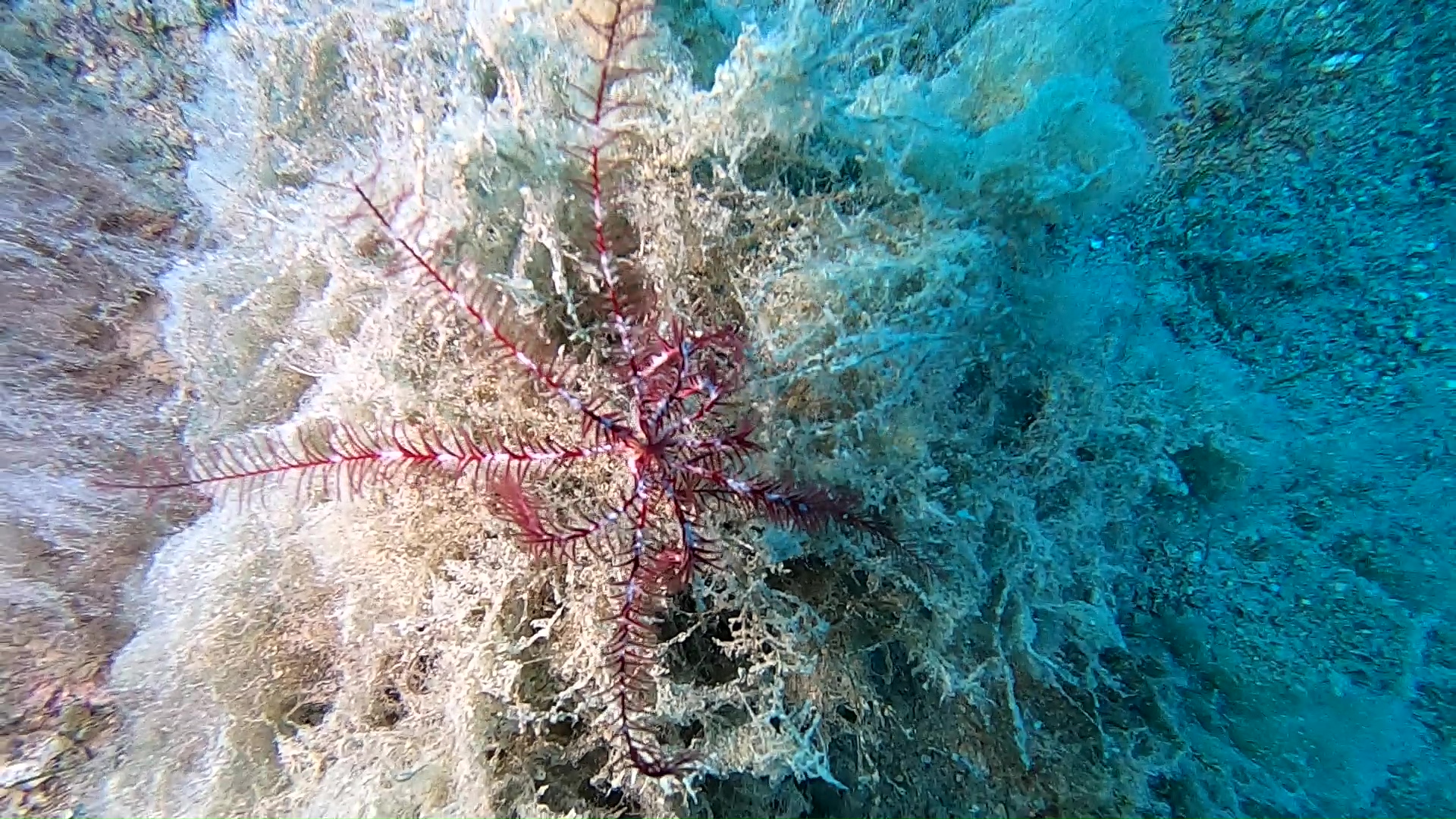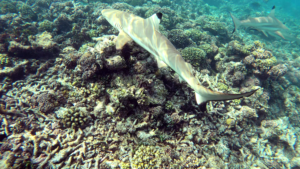During a night dive you can admire how much life there is in our sea and how fragile and hidden from our eyes it is. While I was trying to film a rhizostoma pulmo (Barrel Jellyfish) with blue light to try to capture some bioluminescence, I came across an explosion of blue lights, probably small fish or plankton that could not be seen with the normal white light.
In the video it is quite clear how once the blue light is turned on, these organisms literally exploded, probably attracted by the light itself. The bioluminescence of plankton is now well documented, and even in the Mediterranean Sea it is easily visible in summer without having to dive.
Most of the bioluminescence of the Mediterranean is however generated by the plankton that emit light if somehow they are stimulated and in this case it seems that we have some preference for blue light..
Most of the bioluminescence of the Mediterranean is however generated by the plankton that emit light if somehow they are stimulated and in this case it seems that we have some preference for blue light.
On temperate seas, such as our Mediterranean, the phenomenon appears more evident only in the summer season, in the presence of clear nights and with a wave motion often of weak entity. The phenomenon, as we have said, has been called with the term “marine bioluminescence“. It originates as a result of chemical-physical processes that are formed in various species of animal and plant organisms that are found under the sea surface.
The color of the light is usually white, greenish or even blue. More rarely it can present with a tendency towards yellow and red. In most cases the “marine bioluminescence” originates from Plankton. The animal and plant microorganisms that make up Plankton emit light if they are somehow stimulated or disturbed by other elements. In certain stretches of ocean and in certain circumstances, the phenomenon reaches very impressive dimensions due to the simultaneous presence of enormous masses of these organisms.
In fact, Plankton is present in all waters, but concentrations vary with the seasons and places, increasing especially in summer, especially in temperate seas where it is easier to observe the phenomenon. But more intense bright spots can be caused by other larger marine organisms that live in very large colonies, such as certain jellyfish. Even among fish, crustaceans and molluscs there are many species that emit light, so as to be able to illuminate the entire sea surface. The ability of these animals to emit brightness is called “bioluminescence“.
It is due to the reaction between an enzyme, luciferase, and a pigment, luciferin, a very common feature among the inhabitants of the sea. The “bioluminescence” can be used for various purposes, including illuminating the surrounding waters to confuse potential predators, or as bait or as a signal of courtship.
 English
English Italiano
Italiano





